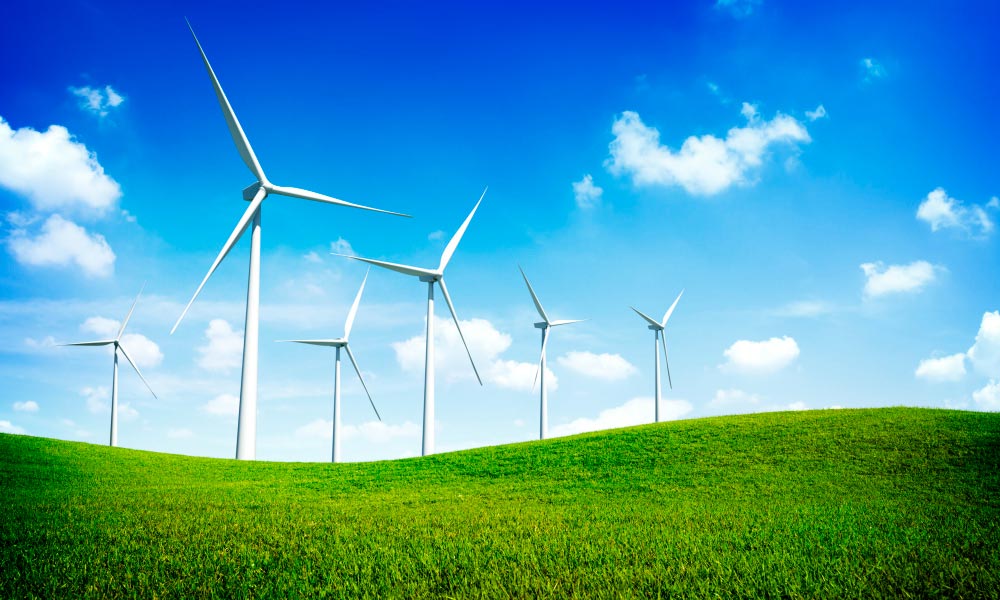
Wind Energy: Cost, Efficiency, and Environmental Impact
Renewable energy sources, such as wind power, have become increasingly popular in recent years due to their potential to mitigate climate change and reduce reliance on fossil fuels. Wind energy has been one of the fastest-growing renewable sources of electricity worldwide, and it has been receiving more attention from consumers, policymakers, and investors. This article will explore the cost-effectiveness, efficiency, and practicality of wind energy as a renewable source of electricity. We will also discuss storage solutions, challenges, and limitations, and the impact on the environment and public health.
Wind Energy Cost
One of the primary concerns of consumers and policymakers is the cost of wind energy compared to other renewable sources, such as solar and hydropower. According to the International Renewable Energy Agency (IRENA), onshore wind energy is one of the most cost-effective sources of electricity, with costs continuing to decline. The average cost of onshore wind energy in 2020 was around $0.05 per kilowatt-hour (kWh), which is comparable to the cost of utility-scale solar and much cheaper than coal and natural gas.
Offshore wind energy is currently more expensive than onshore wind energy due to higher installation and maintenance costs. However, offshore wind energy has the potential to become more cost-competitive as technology improves, and economies of scale are achieved.
Wind Turbine Efficiency
The efficiency and performance of wind turbines are crucial factors in determining the cost-effectiveness of wind energy. Modern wind turbines have significantly improved in terms of efficiency, with larger blades and taller towers allowing them to capture more energy from the wind. A study by the National Renewable Energy Laboratory (NREL) found that modern wind turbines have an average lifespan of 25 years and require minimal maintenance, making them a reliable and cost-effective source of electricity.
Wind Energy Storage
One of the challenges of wind energy is its intermittent nature. Wind speeds can vary throughout the day, and electricity production from wind turbines can fluctuate. Energy storage solutions, such as battery technologies and grid integration, can help address this challenge. Battery storage solutions, such as lithium-ion and flow batteries, are becoming increasingly cost-competitive and can help integrate wind energy into the grid. Grid integration can also help balance electricity supply and demand, ensuring a steady and reliable supply of electricity.
Wind Energy Challenges
Despite the potential of wind energy, there are still challenges and limitations to its implementation. One of the challenges of wind energy implementation is zoning laws, which can limit the location and size of wind farms. Zoning laws vary by region, and some areas may have strict regulations regarding the development of wind energy. Another challenge is the transmission infrastructure, which may not be sufficient to support the growth of wind energy. The development of new transmission infrastructure can be costly and time-consuming, and it may face opposition from local communities.
Wind Energy Impact
The impact of wind energy on the environment and public health is also a concern. Wind turbines require large amounts of land to be installed, which can impact wildlife and ecosystems. However, studies have shown that wind energy has a lower environmental impact than fossil fuel sources, such as coal and natural gas. Wind turbines also produce no emissions, making them a cleaner source of electricity.
Moreover, wind energy can have a positive impact on local economies, creating jobs and increasing property values. A study by the American Wind Energy Association (AWEA) found that the wind energy industry supports more than 120,000 jobs in the United States alone. Additionally, wind energy can help reduce dependence on foreign oil and improve energy security.
Conclusion
In conclusion, wind energy is a cost-effective, efficient, and environmentally sustainable source of electricity. While there are challenges and limitations to its implementation, wind energy has the potential to play a significant role in reducing
Energy

